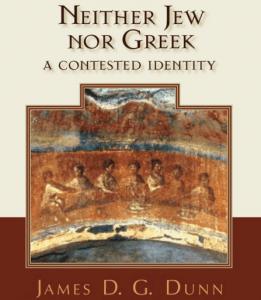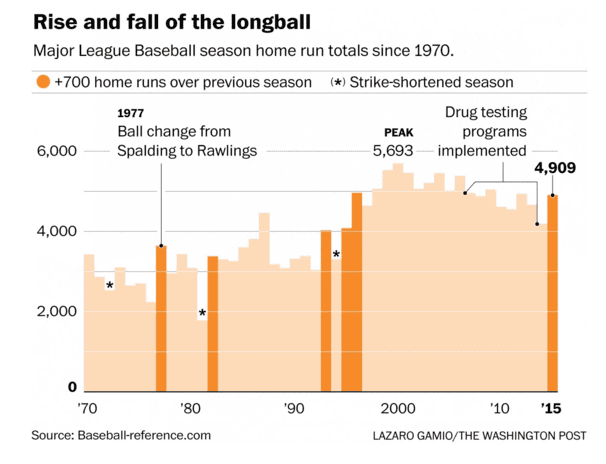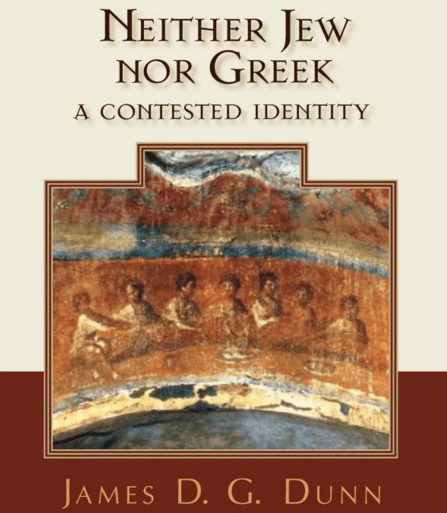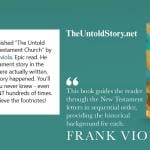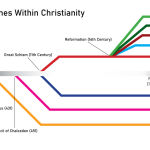 The book of Genesis stands at the front of the Bible and provides an account of origins, setting the stage for the exodus from Egypt and the foundation of Israel as the people of God. The book can be usefully divided into three sections: The primeval history of 1-11, the ancestor narratives of 12-36, and the story of Joseph in 37-50. Although this may seem obvious to the person who has studied the book or the Bible at length, it isn’t necessarily obvious to the “average” Christian. As a long time Christian, familiar with the stories of scripture from infancy, this division was an insight that had escaped me until I first read Bill Arnold’s commentary (published in 2009).
The book of Genesis stands at the front of the Bible and provides an account of origins, setting the stage for the exodus from Egypt and the foundation of Israel as the people of God. The book can be usefully divided into three sections: The primeval history of 1-11, the ancestor narratives of 12-36, and the story of Joseph in 37-50. Although this may seem obvious to the person who has studied the book or the Bible at length, it isn’t necessarily obvious to the “average” Christian. As a long time Christian, familiar with the stories of scripture from infancy, this division was an insight that had escaped me until I first read Bill Arnold’s commentary (published in 2009).
The primeval history (ch. 1) begins with a sweeping and doxological view of creation. It is a hymn of praise to God. God alone created the universe and all that is found within. There is no combat between gods, no divine deities in the sky, no forces of evil in the deeps, all familiar themes in the ancient Near East. God created and formed the earth to function as a holy space, and populated it with humans created in his image to serve as his representatives.
This is followed by four stories connected by genealogies (chs. 2-11). The genealogies serve to flesh out the stories and serve as an important part of a whole narrative composition. The stories, Eden and the Fall, Cain and Abel, Noah and the Deluge, Babel, follow similar themes of spreading sin and the grace of God, with significant and interesting additional features as well.
The literary structure of 2-11 defies the rather simple literal interpretation often assumed by conservative Christians. The complications are numerous, and many of them don’t originate from conflicts with geology, biology, linguistics or archaeology. They arise from the text itself. Even in the absence of external evidence forced harmonizations or interpolations and extrapolations are required to maintain literal rather than “merely” literary truth. As such these complications have been subject to Jewish and Christian thought and speculation for millennia. Walter Moberly (The Theology of the Book of Genesis) outlines several of issues.
The story of Cain and Abel assumes a context with other humans present. The indications include Cain’s wife, but go beyond this alone. Moberly outlines four more. The division of labor with Cain a tiller of the ground and Abel a keeper of sheep. “Such divisions of labor with their particular categorizations would not be meaningful if there were only a handful of people on the earth.” (p. 24) Cain kills Abel in the open countryside. “The point of being in the open countryside is that one is away from other people in their settlements.”(p. 24) Cain is worried about danger from others when he is sent off as a wanderer (v. 14). Building a city (v. 17) presupposes a population. The “solution” to these problems require us to assume that Adam and Eve had many unnamed children before or shortly after Cain and Abel. (All in the 130 years (5:3) before Seth! Seth replaces Abel after Cain kills him (4:25).)
Moberly suggests that a well known story has been used by the author/editor of Genesis for a purpose. “The story itself has a history, and in the course of that history it has changed its location.” (p. 27) The original author/editor and audience was aware that the story was being appropriated for a purpose.
From this it follows not that would should not take the narrative sequence from Adam and Eve to Cain and Abel with imaginative seriousness as part of the developing storyline, but that in analytical terms one should recognize that the narrative is, in a very real and important sense, artificial and constructed out of originally diverse material. The purpose of the literary construction would appear to be to juxtapose certain archetypal portrayals of life under God so that the interpretative lens is provided for reading God’s call of Abraham and Israel that follows. (p. 28)
 The story of Noah and the Flood is another example. Moberly suggests that the perspective of the story reveals its genre. “The omniscient narrator reports even the inner thoughts and words of YHWH (6:5-8, 8:20-21). But he says nothing whatever about Noah’s thoughts or words – Noah says precisely nothing throughout.” (p. 29) The story isn’t concerned with practicalities on any level. Nothing about living conditions at all. The people and animals are placed into a dark box for the duration. Noah couldn’t see what was going on outside. He had to send a bird. The bird returns with an olive leaf. After a year underwater no tree would put out leaves. But that isn’t important. In the context of the story “the leaf shows a return of regular conditions for life on earth.” (p. 30) There is a re-creation following the uncreation of the flood.
The story of Noah and the Flood is another example. Moberly suggests that the perspective of the story reveals its genre. “The omniscient narrator reports even the inner thoughts and words of YHWH (6:5-8, 8:20-21). But he says nothing whatever about Noah’s thoughts or words – Noah says precisely nothing throughout.” (p. 29) The story isn’t concerned with practicalities on any level. Nothing about living conditions at all. The people and animals are placed into a dark box for the duration. Noah couldn’t see what was going on outside. He had to send a bird. The bird returns with an olive leaf. After a year underwater no tree would put out leaves. But that isn’t important. In the context of the story “the leaf shows a return of regular conditions for life on earth.” (p. 30) There is a re-creation following the uncreation of the flood.
 Other issues include the presence of the Nephilim both before and after the flood (Num 13:33). The text is explicit: “The Nephilim were on the earth in those days—and also afterward—when …” (6:4) This can be harmonized … but the point is that it has to be harmonized. Moberly notes that some rabbis proposed that the king of the Nephilim rode the roof of the ark. Other more sophisticated strategies have also been used.
Other issues include the presence of the Nephilim both before and after the flood (Num 13:33). The text is explicit: “The Nephilim were on the earth in those days—and also afterward—when …” (6:4) This can be harmonized … but the point is that it has to be harmonized. Moberly notes that some rabbis proposed that the king of the Nephilim rode the roof of the ark. Other more sophisticated strategies have also been used.
The discussion of Cain’s descendants in ch. 4 names Jabal as the ancestor of those who live in tents and raise livestock and Jubal as the ancestor of all who play stringed instruments and pipes. “The natural implication of the text is that it refers to peoples living in the time of the narrator: the living in tents and musical playing are depicted with an active participle; … this account of Cain’s descendants seems unaware of a Flood that wiped them all out.” (p. 32)
Where is the truth? Lines have been drawn. Tom Paine and Richard Dawkins among others have taken this evidence and used it to dismiss Genesis as misguided ancient myths and legends, “invented absurdities or downright lies.” Many Christians have responded by committing to the defense of literal truth at all cost. Answers are found for everything. Moberly suggests that both the atheistic critique and the conservative reaction are based on the same understanding scripture as the Word of God – and perhaps it is this understanding that is the problem.
The basic issue for the theological interpreter is the relationship between the human and the divine. The human dimensions of the biblical text have been extensively studied in the modern period; and interpreters sometimes conclude, or at least imply, that to take seriously this human element is somehow to eliminate the divine. (p. 38)
But there is no reason to assume that the human element cannot mediate the divine message. Human language, specifically ancient Hebrew, is used to mediate the story. These words, and those of the human speakers, are in a language that arose later than the context of the stories. Even God’s thoughts are related to us in the human Hebrew language. The divine is mediated through human elements. One should conceive the divine and human roles as complementary rather than competitive.
The real challenge is to grasp how these belong together. Or, in other terms, it is clear that the early chapters of Genesis – like the Bible as a whole – is a work of human construction. The question becomes whether this human construction is itself a response to antecedent divine initiative, and so mediates a reality beyond itself, and, if so, how fidelity in mediation should be understood, evaluated, and appropriated. (p. 40)
If the original authors and editors appropriated and used older stories to tell this story of origins, they did so knowingly and they could have been inspired by God to do so. Inspiration isn’t limited to simple composition and original reports. Moberly quotes Jon D. Levenson: “If Moses is the human author of Genesis, nothing ensures that God is its ultimate Author. If J, E, P, and various anonymous redactors are its human authors, nothing ensures that God is not its ultimate Author.” (p. 39)
Among other things, we should read the text canonically. It is the received form as it has been edited and assembled that carries the divine message. The identity of the human authors and editors is secondary, of little importance. Parts of the text may indeed originate at the time of Moses, other parts later. But it is of no import, except when details of context help us to better understand the message. We don’t read Genesis to sort truth from error, but to find and know our God.
A story of God. If the primeval history of Genesis 2-11 is assembled as a literary whole using “stories with histories” it still can and does reveal God. In fact, God is the primary actor in this part of Genesis. He creates the world and places humans, created in his image male and female, in the world to act as his representatives. When Adam and Eve are tempted and sin, God responds with both judgement and grace. His speeches are the most important. When Cain’s offering is rejected God warns of sin lurking at his door and when he murders Abel God knows and responds in judgement and grace. When humankind sinks to the depths of depravity God knows and responds in judgement and grace. But this solved nothing and resulted in a new covenant. When humankind builds a city and a tower in rebellion against God, God responds in judgement and grace.
And then God calls Abraham.
There is more that can be said about the text. Bill Arnold (Genesis (New Cambridge Bible Commentary)), notes that the primeval history establishes the God of Israel as the sovereign creator God of the entire world.
Gen 1-11 ties Israel’s ancestral covenant to the Creator of the universe. Yahweh is not simply the God of Jerusalem, nor of geographic Israel, nor is Yahweh only the God of the exodus plagues, nor of the Sinai desert. In a remarkable theological move that transcends most of ancient Near Eastern speculative thought, Yahweh of Israel, the God of the exodus and Sinai covenant as well as the God of the ancestral covenant, becomes the sovereign Lord of all. The God of Sinai and Zion is thus also the God of Eden and Ararat. (p. 124)
The God who calls Abraham is the one and only Lord of all.
Whatever position we take on the compositional history of Genesis 1-11, we can all agree on this.
What is the message of Genesis 1-11?
Is it true? Why or why not?
If you wish to contact me directly you may do so at rjs4mail[at]att.net.
If interested you can subscribe to a full text feed of my posts at Musings on Science and Theology.



